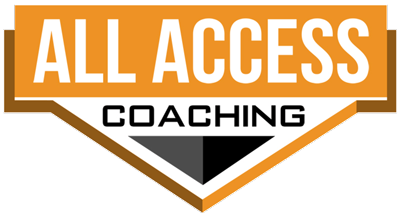3 Drills to Get the Most Out of Your Wide Receivers

Wide receivers are supposed to catch the football, right?
Yes, but often times, and especially if you like to run the ball, your receivers are going to be most impactful when they are blocking.
The Tex-Bone blocks plays for touchdowns — and if the receivers do not know how to block, then that will not happen.
Coach Joe Austin, creator of the Tex-Bone, has 3 go to drills that he uses so that you don’t need to worry about safeties and corners making tackles in the open field after your running back bursts through the line.
Here are 3 drills to get the most out of your receivers so that you don’t waste any of the players on the field!
1. Inside Out Block Drill
Purpose: This drill teaches receiver the optimal angle for executing a downfield block.
Set Up: An inside-out angle is the optimal blocking angle because it allows the receiver to position their body between the ball carrier and the defender. To begin the drill, a wide receiver and a defender will be placed about ten yards apart and directly across from each other. A ball carrier will be placed inside and behind the wide receiver. upon command, the ball carrier will run toward the sideline and the defender will pursue. It is the job of the wide receiver to maintain an inside out angle on the defender while staying between the ball carrier and the defender. Once the distance between the wide receiver and the defender is closed the wide receiver will next engage the defender on his outside number and either reach block them or push them past the ball carrier.
Variations: The direction that the ball carrier runs can be changed to elicit different reactions from the defender. If the defender changes their angle to get the ball carrier the wide receiver must do the same.
2. Head Up Block Drill
Purpose: This drill teaches the receivers to be physically tough and apply concepts of leverage and hand placement when engaging a defender.
Set Up: Using a lineman board between their feet, the two players will, upon command, punch their hands upward and to the breast plate of the opponent in an attempt to gain inside position on the opponent. At the same time, they will sink their hips to attempt to gain a leverage advantage. The final element of the drill is toughness and strength as the drill will continue until one opponent pushes the other past the end of the board.
Variations: The rill will typically start with the players nose to nose, but the two players can start at either end of the board and approach each other at the beginning of the drill. The small separation of the players adds to the challenge of working to gain advantageous inside hand placement and leverage.
3. Accelerate at Contact Drill
Purpose: This drill teaches the wide receiver to accelerate at the point of contact to gain physical control over the defender.
Set Up: The wide receiver and the defender will align in close proximity, facing each other, with the receiver’s right shoulder across the defender’s right shoulder. This staggered alignment simulates the inside-out angle that is optimal for downfield blocking. upon command, the wide receiver will step to the defender, strike the opponent’s breast plate and run his feet. This drill trains acceleration at contact so that the wide receiver can gain control of the defender.
Variations: The distance between the wide receiver and the defender can be increased. In doing so, you are teaching an important blocking concept: stay under control while working to the point of contact, then accelerate at the point of attack. By staying under control, the wide receiver increases his chance of being in the right position when he gets to the defender.





Responses